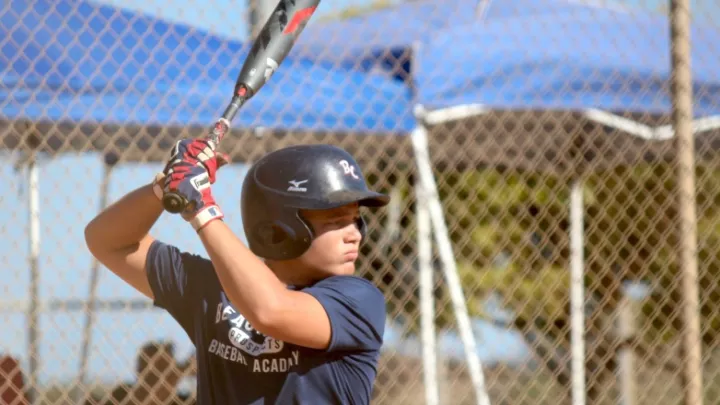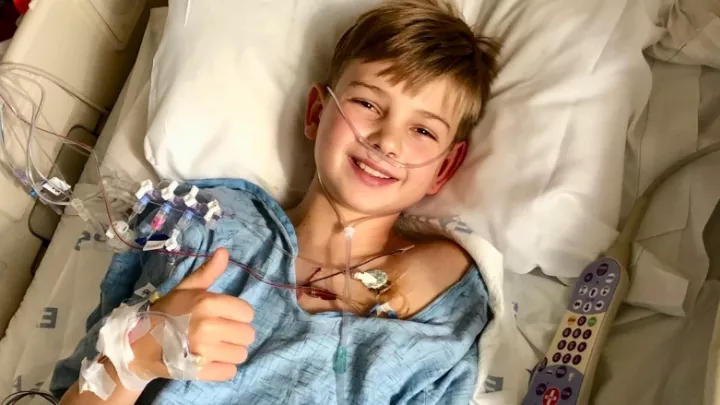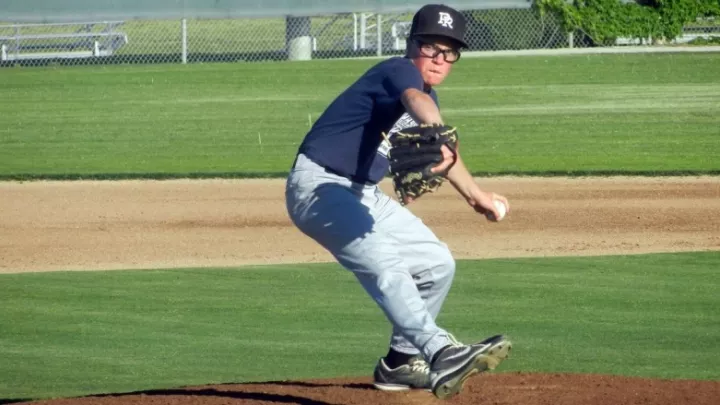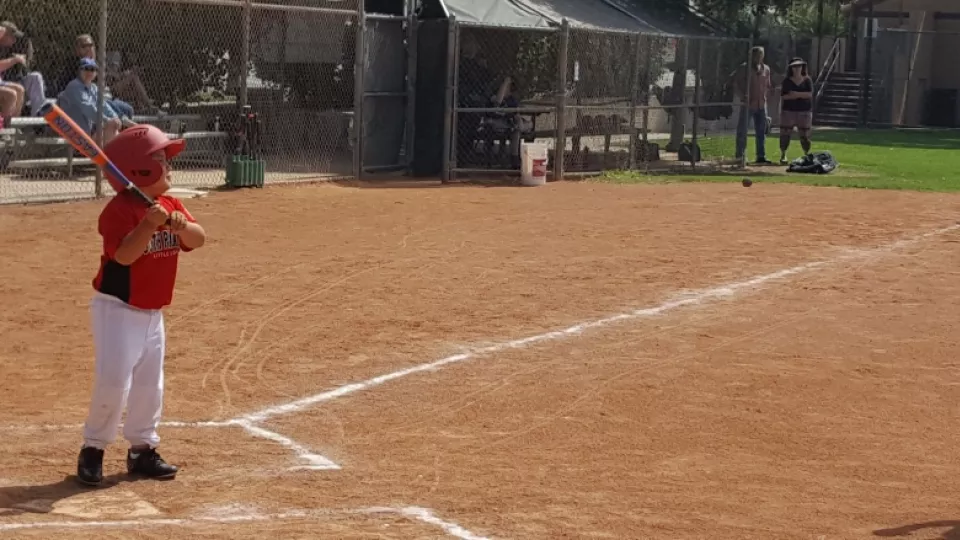
A Team of Their Own
Everybody who knows 6-year-old Andrew Escamilla always expected he would play professional baseball someday.
His father, a diehard Dodgers fan, took the boy to see the Men in Blue at Dodger Stadium when Andrew was a baby. As a toddler, Andrew seemed to love the sport, and his mother and sisters daydreamed about what it would be like when he was older and they could cheer him on in Little League.
Then, with one diagnosis, everything changed.
Just after his third birthday, Andrew was diagnosed with Duchenne muscular dystrophy, a genetic condition characterized by a progressive weakening of voluntary muscles. His sister Juana remembers the family was despondent over the news, largely because of the impact it would have on their dreams for him.
“We all thought he missed his chance,” says Juana. “We all thought the dream of Andrew playing baseball was gone forever.”
Instead, however, with the help of Children’s Hospital Los Angeles, Andrew embarked on a treatment journey that led him to a clinic for kids just like him—a clinic through which he connected with a special baseball team in a special league for children with physical and developmental handicaps.
Now 6 years old, Andrew gets to bat and circle the bases in a bright-red uniform as he lives out his wish of playing baseball—not for the Dodgers, but for an inspiring group of kids named the Fireballs.
“Life gave him another opportunity,” Juana says. “It brought back something we thought we lost.”
Humble beginnings
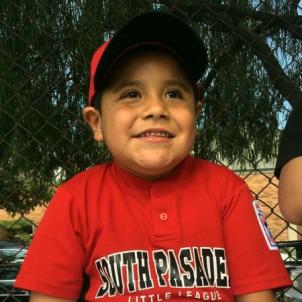
Every team faces challenges over the course of a season, but the challenges for the South Pasadena Fireballs are more long-term. Each and every player on the squad has some sort of disease or disorder. Many of the players have neuromuscular conditions, including muscular dystrophy, spinal muscular atrophy and Charcot-Marie-Tooth disease. Other players are on the autism spectrum. Like Andrew, most team members have a strong connection to CHLA.
The team itself developed thanks to the efforts of Leigh Ramos-Platt, MD, attending physician in CHLA’s Division of Neurology and director of CHLA’s Neuromuscular Clinic. In 2009, Ramos-Platt reached out to the Little League in her South Pasadena community, looking to find a spot for one of her patients who wanted to play baseball. She was connected with Scott Parker, a local Little League coach who, as a former volunteer with the Special Olympics, was ideally suited to manage a Challenger team, designated for kids with disabilities. That led to the creation of the Fireballs. Over time, as awareness of the team grew, so did its roster, which now numbers about 25 kids—so many that in some games it’s difficult to guarantee that every player will have a turn at bat.
“When we give a diagnosis of [a neuromuscular disease], parents are mourning a lot of things: They are sad there’ll be a short-term life span, and they’re mourning the loss of a ‘typical’ child,” says Ramos-Platt, who also serves as associate professor of Clinical Neurology at the Keck School of Medicine of the University of Southern California. “These games and this experience make it all normal again.”
Ramos-Platt never thought the Fireballs would become so popular. In the first few years, only a handful of kids from the clinic played, and commitments were spotty at best. What’s more, a lack of participating teams for kids with disabilities meant that many weeks, kids on the Fireballs were competing against themselves.
Gradually, the situation changed for the better. More kids signed up. New teams were started. Little League International conferred official Challenger status on the league, which prompted even more teams to join. The Fireballs claimed a relatively unused ball field as its home field.
Another boost came from Ramos-Platt’s husband, Lorne Platt, who joined with Parker to co-coach the kids.
Both men have day jobs, and extensive coaching experience at various grade levels; and both wanted to be involved from the beginning. As Platt describes it, volunteering is a labor of love, and getting involved meant an opportunity to work with kids to teach them life lessons through sport.
“The goal for leading these kids was simple: No matter what, as much as you can, make sure they’re having a good time,” says Platt, an adjunct geography professor at California State University, Los Angeles, and California Polytechnic University, Pomona. “I admit, though, that there were days and hours when it was difficult to do this. We just had to roll with it a bit and be very flexible and make sure we didn’t stick to dumb rules.”
Parker, an electrical engineer at Boeing in El Segundo, agrees.
“There’s nothing quite like coaching kids,” he says. “The sooner you’re able to draw parallels between what’s happening at home and in the world of sports—that’s something that really resonates.”
Activities don’t always pertain to baseball. Platt and Parker try to mix practices and games with other fun events for the players. One example: During a recent game this past fall, a local fire truck showed up to “investigate,” and the firefighters interacted with players for most of the game. The coaches also host regular post-ballgame potluck dinners.
Buddy system
During the season, which stretches from March to June, both games and practices are held on weekends. Anywhere from 10-15 players turn out for each game.
Because most of the players on the Fireballs have different types of neuromuscular challenges, ability levels vary widely. Some players can swing a bat and motor around the bases on their own. Others are confined to wheelchairs and have limited movement.
Coach Parker says all players are encouraged to get around the bases however they feel most comfortable, and some need help to do so. Most players have able-bodied “buddies”—family members or friends who act as proxies during games. Anyone from the surrounding community can serve as a buddy; all four of the coaches’ kids volunteer. Depending on the player’s condition, buddy responsibilities might range from running the bases to fielding fly balls, and from swinging the bat to pitching. Andrew Escamilla, for instance, will play until his muscles tire, then he’ll let a buddy help.
Parker says this speaks to perhaps his biggest coaching challenge—making sure his players keep themselves out of unsafe situations.
“Some kids have a hard time focusing and you may need them to not be 5 feet in front of the batter because they’re going to be hit by the ball,” Parker says. “I don’t force kids to move. If I need to, I’ll get a parent to help. This might slow down the game a little bit, but it’s really not that big of a deal.”
Part of something great
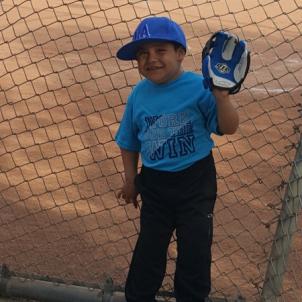
Really, though, the game is only part of the fun. Players and family members alike say they love the league for the camaraderie, for the sense of belonging it engenders.
“It’s fun to work together with other players,” says Duchenne patient Ian Saur, who just recently turned 13 and has been playing on the Fireballs for nearly three years. Saur says he starts getting excited for weekend games at the start of each week. “That’s what I like best about being on a team—I like playing with other kids.”
Andrew’s sister Juana says her family travels two hours on public transit each way from their home in South Los Angeles to get Andrew to practice and games in South Pasadena.
“This isn’t something we’d do if it wasn’t satisfying and fulfilling for [Andrew],” she says. “He lives for it.”
While playing on the Fireballs has had a life-altering impact on all the young team members, the experience also has transformed the lives of the mothers, fathers, brothers and sisters who have been involved as support staff for each of the players. For many parents, the opportunity to interact with other families managing a disability is special.
Lois Saur, Ian’s mom, says chatting with other parents in similar circumstances provides her with a perspective and a sense of community she doesn’t get when going through her day-to-day realities.
“It’s always nice to feel you’re not alone,” she says.
What’s next
As the L.A.-area Challenger Division continues to grow, so, too, will the number of opportunities for kids with physical and developmental challenges to get involved. The good news: Demand for spots on teams in the division has been climbing steadily, and the local league may be adding new teams and expanding rosters as soon as next season.
Even the folks from Little League International have taken notice, hailing the Challenger Division as a burgeoning opportunity for new players and fans.
“The Challenger Division empowers communities to provide the Little League experience to all youth, regardless of ability,” says Sam Ranck, division director and Little League International’s league development manager.
Platt and Parker say the Fireballs’ 2018 season could include more games than ever before—a testament to the division’s growth. Beyond that, there has been talk of parlaying interest in Fireballs into the creation of a soccer team for children with disabilities as well.
“The more they can play,” says Ramos-Platt, “the happier they’ll be.”
